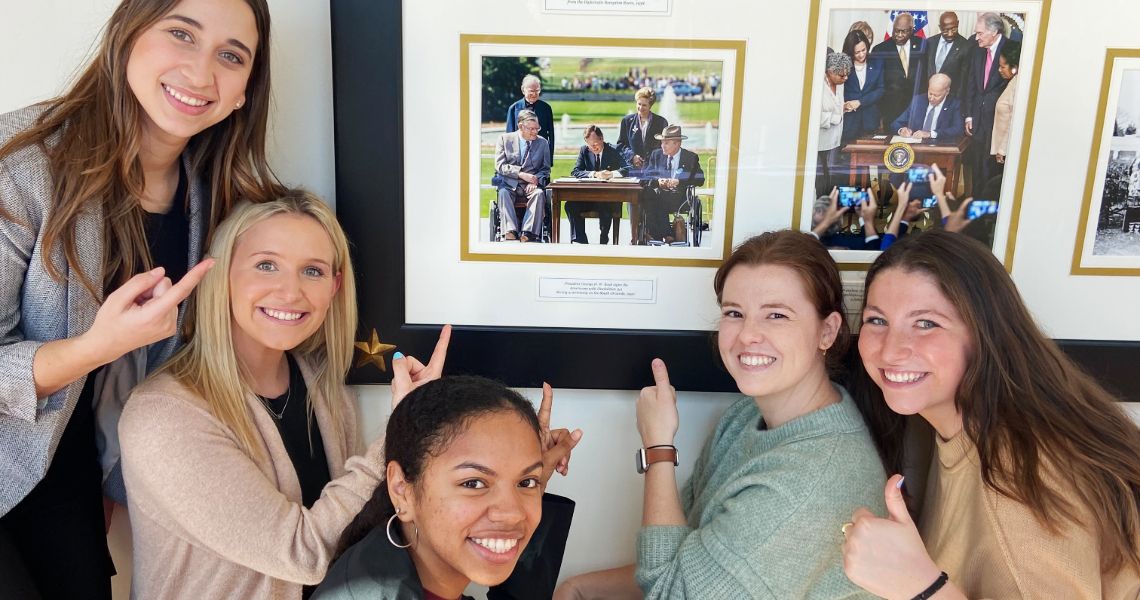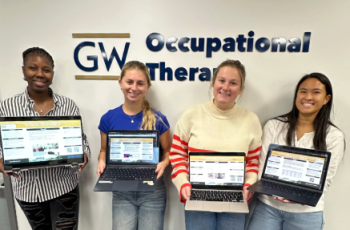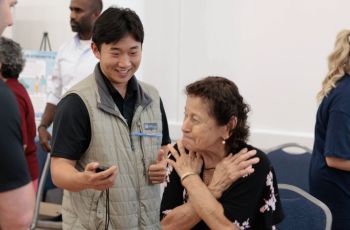The month of July commemorates the publication of the original Americans with Disabilities Act (ADA) Accessibility Guidelines, which were published on July 26, 1991. The ADA was established to protect individuals with disabilities from discrimination in various spaces. The National Institute on Disability, Independent Living, and Rehabilitation Research reports around 13.9% of individuals in the US are disabled (source). Considerations for accessibility should include visual, hearing, motor, and/or cognitive impairments.
What is included in the ADA?
Title I protects against discrimination in employment based on disability.
- It also holds employers accountable for providing reasonable accommodations to individuals with disabilities to aid them in completing their job requirements.
Title II enables individuals with disabilities to participate in public programs and activities. Title III also provides guidance for public accommodations and services that are owned and operated by private entities.
- This is inclusive of public transportation (access to airways and railways are covered under separate legislation) and public accommodations (e.g., places of lodging, restaurants/bars, theaters, stadiums, concert halls, convention centers, lecture halls, grocery stores, shopping center, bank, barbershop, park, zoo, daycare center, senior citizen center, places of education, gym). The ADA regulations provide specifications for public spaces to be considered “accessible”. This includes door widths, ramp dimensions, and access to lighting.
In recent years, there has been heightened awareness of concerns regarding digital accessibility. Digital accessibility refers to a person’s ability to independently consume and/or interact with digital applications and content (accessibility.day). On April 24, 2024, the Department of Justice updated regulations to Title II of the ADA to ensure that web content and mobile applications of state and local government entities are accessible to people with disabilities (source).
What is the US Access Board?
The U.S. Access Board is an independent federal agency established in 1973 that promotes equality for people with disabilities through leadership in accessible design and the development of accessibility guidelines and standards. The U.S. Access Board serves as the leading source of information regarding accessible design.
- To note, most of the public members of the U.S. Access Board must have a disability. The work of the U.S. Access Board is paramount in ensuring the needs of individuals with disabilities are met through legislative efforts.
Why is Accessibility and the ADA Important for Occupational Therapy?
As holistic practitioners, considerations of accessibility and inclusion are at the core of occupational therapy practice. Through the use of activity analysis, occupational therapy practitioners (OTPs) can identify the necessary performance skills to complete desired occupations. OTPs are also able to identify environmental barriers that impede occupational performance and make recommendations that enable increased engagement.
Disability should be included in conversations of diversity and equity, as disabled individuals continue to face barriers to access.
For example, when considering accessing public transportation, individuals with disabilities report negative attitudes from drivers, as well as decreased access to ramps, long walking distances and long waiting times (Mwaka et al., 2024). While accessibility is a necessary component, the pursuit of inclusion of people with disabilities within society provides a pathway for occupational justice, enabling full participation.
The DC Public Library will be hosting several activities for disability pride month to participate in. Click the button to learn more, below.



